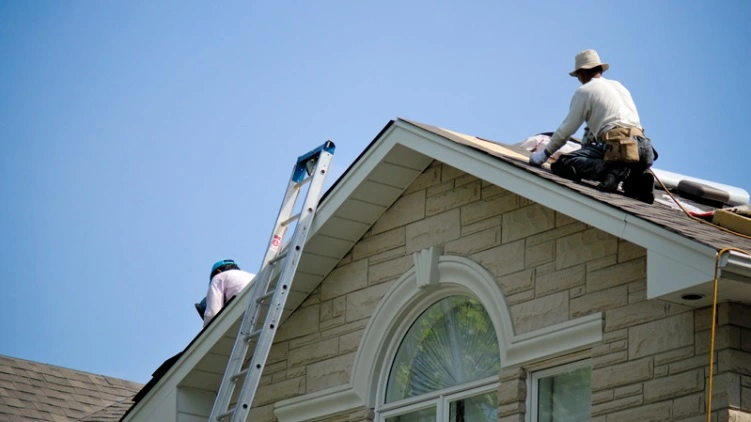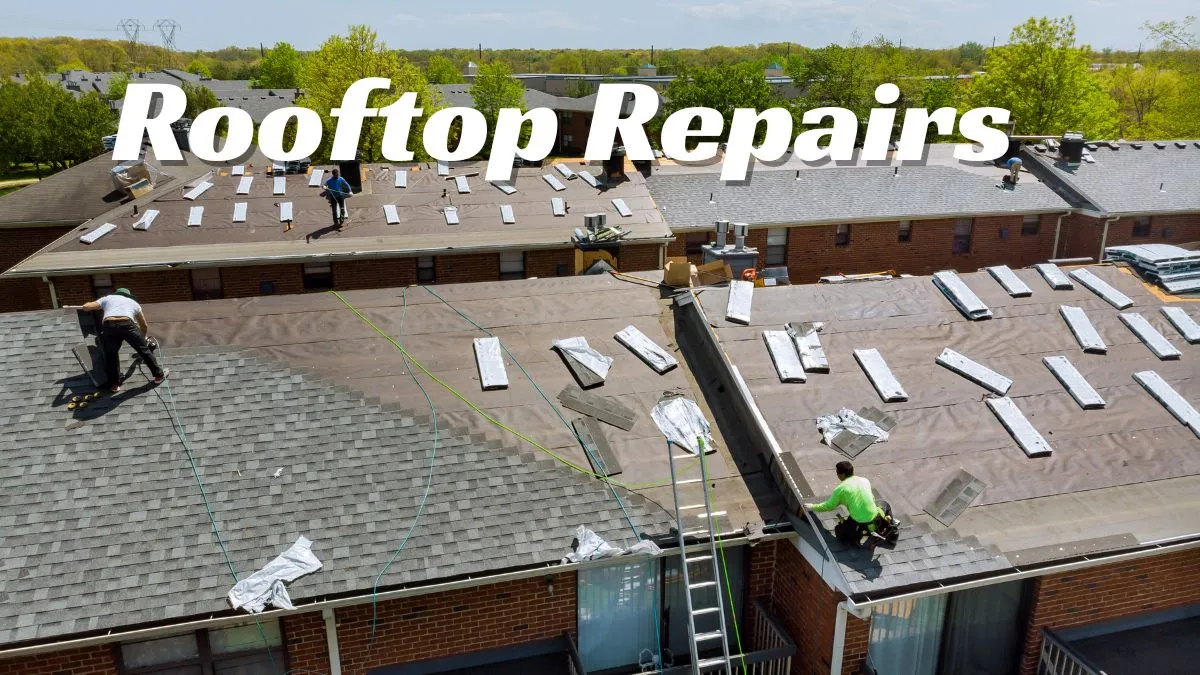Rooftop Repairs- A roof is more than just the crowning glory of your home; it’s a vital component that protects you, your family, and your possessions from the elements. However, over time, even the most well-constructed roofs can develop issues. Whether it’s due to extreme weather, regular wear and tear, or improper installation, these problems can lead to leaks, structural damage, and a host of other issues if not addressed promptly.
Types of Damage: Rooftop Repairs
Understanding the types of damage that can occur to your roof is the first step in maintaining its integrity. Here are some common types of damage:
Weather-related damage:
Extreme weather conditions such as heavy rain, wind, or hail can cause significant damage to your roof. This can include missing or broken shingles, cracks, or leaks. Regular inspections after severe weather events can help identify and address any damage before it worsens.
Wear and tear:
Over time, your roof will naturally wear down due to exposure to the elements. This can lead to cracks, leaks, and missing or broken shingles. Regular maintenance, such as cleaning gutters and replacing damaged shingles, can help extend the life of your roof.
Improper installation
If your roof was not installed correctly, it can lead to a host of problems down the line. This can include leaks, cracks, and missing or broken shingles. Hiring a reputable roofing contractor to install your roof can help prevent these issues. These professionals have experience installing residential and commercial roofing systems, including flat roofs, pitched roofs, and more. They can ensure that all roofing components are properly installed and that the roof is sealed correctly to prevent future damage.
Signs of Roof Damage: rooftop repairs
Detecting roof damage early is crucial to preventing further issues. Here are some common signs that your roof may be damaged:
Leaks
Water stains on your ceiling or walls are a clear indicator of a leaky roof. If left unchecked, these leaks can lead to mold growth and structural damage.
Missing or broken shingles
If you notice missing or broken shingles on your roof, it’s a sign that your roof may be compromised. Damaged shingles can allow water to seep into your home, leading to leaks and other issues.
Sagging roof
A sagging roof is a sign of a serious structural issue. If you notice your roof sagging, you should contact a roofing professional immediately.
Damaged flashing
Flashing is the metal strips that seal the seams of your roof. If the flashing is damaged or missing, it can allow water to seep into your home.

Roof Repair vs. Roof Restoration
When it comes to addressing roof damage, you have two main options: roof repair or roof restoration.
Roof repair
Roof repair involves fixing specific issues, such as replacing damaged shingles or repairing leaks. This is a cost-effective option for addressing minor damage and can help extend the life of your roof.
Roof restoration
Roof restoration involves a more comprehensive approach to repairing your roof. This can include cleaning, repairing, and recoating your roof to extend its lifespan. Roof restoration is often a more cost-effective option than roof replacement and can help improve the appearance and functionality of your roof.
DIY vs. Professional rooftop repairs
While some minor roof repairs can be done yourself, it’s often best to hire a professional roofing contractor for more complex repairs. A professional will have the experience and tools necessary to safely and effectively repair your roof, ensuring that the job is done right the first time.
Roof Maintenance Tips: rooftop repairs
Regular roof maintenance is key to preventing damage and extending the life of your roof. Here are some tips to keep your roof in top condition:
Regular inspections:
Inspect your roof regularly for signs of damage, such as missing or broken shingles, leaks, or sagging areas.
Clean gutters
Clogged gutters can cause water to back up onto your roof, leading to damage. Clean your gutters regularly to prevent this issue.
Trim overhanging branches
Overhanging branches can rub against your roof, causing damage. Trim back any branches that are touching your roof to prevent this.
Remove debris
Debris such as leaves and branches can accumulate on your roof, leading to damage. Remove any debris regularly to prevent this issue.
The Benefits of Roof Restoration: rooftop repairs
Roof restoration offers several benefits beyond just repairing damage. It can:
Extend the lifespan of your roof
Roof restoration can add years to the life of your roof, delaying the need for a costly replacement.
Improve energy efficiency
A restored roof can improve your home’s energy efficiency by sealing gaps and cracks that can let in hot or cold air.
Enhance curb appeal:
A newly restored roof can enhance the overall look of your home, increasing its value and appeal to potential buyers. Prevent future damage: By addressing issues early and applying protective coatings, roof restoration can help prevent future damage to your roof.
Conclusion: Rooftop Repairs
Rooftop Repairs- Your roof is a vital part of your home’s structure, and maintaining it is crucial to protecting your investment. By understanding the types of damage that can occur to your roof, recognizing the signs of damage, and taking proactive steps to address any issues, you can extend the life of your roof and ensure that your home remains safe and dry for years to come.









